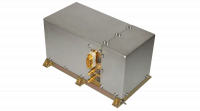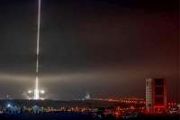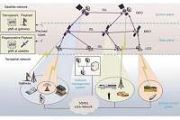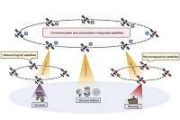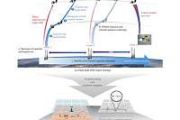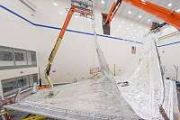Spectratime RAFS is designed with the latest technologies, providing advanced features, such as long lifetime, high reliability, lightweight and ultra low phase noise, for next-generation space applications.
Applications:
- GNSS/GPS navigational systems
- SAR systems
- FGU systems
- MRO systems
Key Features:
- Output 10 MHz and 10 MHz auxiliary
- Accuracy < 2E-10 after launch & commissioning < 1E-10 under vacuum at delivery
- Temp -5 to 10C
- Aging < 1E-10/yr
- Size (WxHxL) 217x124x117mm | 8.54x4.88x4.6"
- Weight 3.4 Kg | 7.49 lbs
- Lifetime/MTBF > 15 yrs / < 2000 fit span>
- Power (operating) < 35W
- Voltage 28V
- Warmup <60W
DESCRIPTION
The Rubidium Atomic Frequency Standard (RAFS) is a state-of-the-art ultra-stable atomic clock able to deliver a frequency stability of about 2x10-14 over averaging intervals of 10’000 s.
The RAFS unit is composed of two main parts. The clock it-self named “RAFS core” and the Electronic Power Conditioning name “EPC”
which includes the DC/DC converter and the electrical interface to the satellite. The EPC design could be adapted to the satellite need.
The RAFS is a Rb clock. The Rb clock essentially consists of a voltage-controlled crystal oscillator (VCXO) which is locked to a highly stable atomic transition in the ground state of the Rb87 isotope. While the frequency of the VCXO is at the convenient standard frequency of
10 MHz, the Rb clock frequency is at 6.834 GHz in the microwave range. The link between the two frequencies is done through a phase- stabilized frequency multiplication scheme whereby a synthesized frequency is admixed to enable exact matching.
SPECIFICATIONS
|
Parameter |
value |
Unit |
|
|
PERFORMANCES |
|||
|
Frequency (sine) Main Auxiliary |
10.00 10.00 |
MHz MHz |
|
|
Frequency accuracy after launch & commissioning phase : Under vacuum conditions at delivery |
≤ 2 x 10-10 ≤ 1 x 10-10 |
||
|
Freq. Stab Short Term (max / Typical) 1 sec 10 sec 100 sec 1000 sec 10000 sec (drift removed) flicker floor (drift removed) |
Max: 5 x 10-12 1.3 x 10-12 5 x 10-13 1.8 x 10-13 5 x 10-14 5 x 10-14 |
Typical: 3 x 10-12 1 x 10-12 3 x 10-13 6 x 10-14 3 x 10-14 2 x 10-14 |
|
|
Freq. Stab Long Term (typical) |
< 1 x 10-10 |
Per year |
|
|
Outputs Signal Level |
13 ±1 |
dBm |
|
|
Return loss power ON conditions (nominal output impedance 50 Ω) |
> 20 |
dB |
|
|
Spurious Signals (band +/- 2MHz) Outside |
< -80 < -60 |
dB dB |
|
|
Harmonics |
< -40 |
dBc |
|
|
Phase Noise (TBD MHz) 1Hz 10 Hz 100 Hz 1000 Hz 10000 Hz 100000 Hz |
-90 -120 -130 -140 -145 -145 |
dBc dBc dBc dBc dBc dBc |
|
|
PHYSICAL CHARACTERISTICS |
|||
|
Envelope and dimensions |
L=217 W=124 H=117 |
mm mm mm |
|
|
Mass |
max. 3.4 |
Kg |
|
|
Stiffness |
> 100 |
Hz |
|
|
OPERATIONAL REQUIREMENTS |
|||
|
Design Lifetime |
> 15 |
Years |
|
|
INTERFACES |
|||
|
ELECTRICAL POWER INTERFACE |
|||
|
Normal Power Line Voltage |
28 V nominal Or 50 V nominal |
|
|
|
TM/TC INTERFACE |
|||
|
TC List RAFS ON RAFS OFF |
HLC HLC |
||
|
TM List RAFS ON/OFF (isolated) RAFS Lock Indication RAFS Rb Light RAFS Rb Signa RAFS VCXO control I/P Main Bus Voltage Main Bus Current TCB Temperature EPC Temperature |
Relay/Switch Digital 0 or 5 0-5 0-5 0-5 0-5 0-5 NTC NTC |
V V V V V |
|

